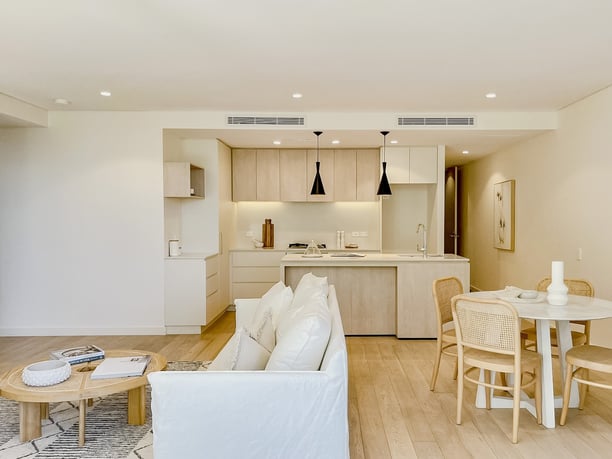The Importance of a Focal Point
What is a focal point? In interior design and interior styling, there are few elements more important than the focal point. It’s the star of the .

When it comes to enhancing the aesthetics and functionality of a space, professionals such as property stylists, interior decorators, and interior designers play crucial roles. While their work may overlap to some extent, each role has distinct responsibilities and expertise. Let's delve into the differences to help you understand who to hire for your specific needs.
A property stylist is a specialist focused on optimising the visual appeal of a property listed for sale to attract potential buyers. The primary goal is to create an inviting atmosphere that resonates with the target market, leading to a higher sale price. Property stylists work with real estate agents and homeowners to stage properties effectively for sale.
An interior decorator focuses on enhancing the aesthetics of indoor spaces. They work closely with clients to understand their preferences, style, and functional needs to create visually pleasing interiors. Interior decorators are skilled in balancing design elements such as colour, texture, and furniture to transform spaces into inviting and harmonious environments.
Interior designers are trained professionals with expertise in both aesthetics and functional design aspects. They go beyond decorating and styling to address structural considerations, building codes, and spatial planning. Interior designers work on a wide range of projects, from residential homes to commercial spaces, incorporating elements that enhance usability, safety, and overall appeal.
In conclusion, choosing the right professional depends on your specific needs. For enhancing visual appeal and staging properties, a property stylist is ideal. If you seek aesthetic improvements and decor expertise, an interior decorator fits the bill. For comprehensive design projects involving structural changes and spatial planning, an interior designer's expertise is invaluable.
Each role contributes uniquely to creating captivating and functional spaces, ensuring that every aspect of design and presentation aligns with the client's vision and goals.
If you’re selling your home, Spatial Property Styling would love to help and has the expertise and experience to help elevate the appeal of your property. For a complimentary pre-sale consultation, contact us today!
What is a focal point? In interior design and interior styling, there are few elements more important than the focal point. It’s the star of the .
At Spatial, we’re more than a team of stylists. From interior designers, decorators and visual merchandisers to real estate agents, logistical .
Home staging is the strategic process of enhancing a property's appeal by thoughtfully arranging furnishings and decor to highlight its key features. .